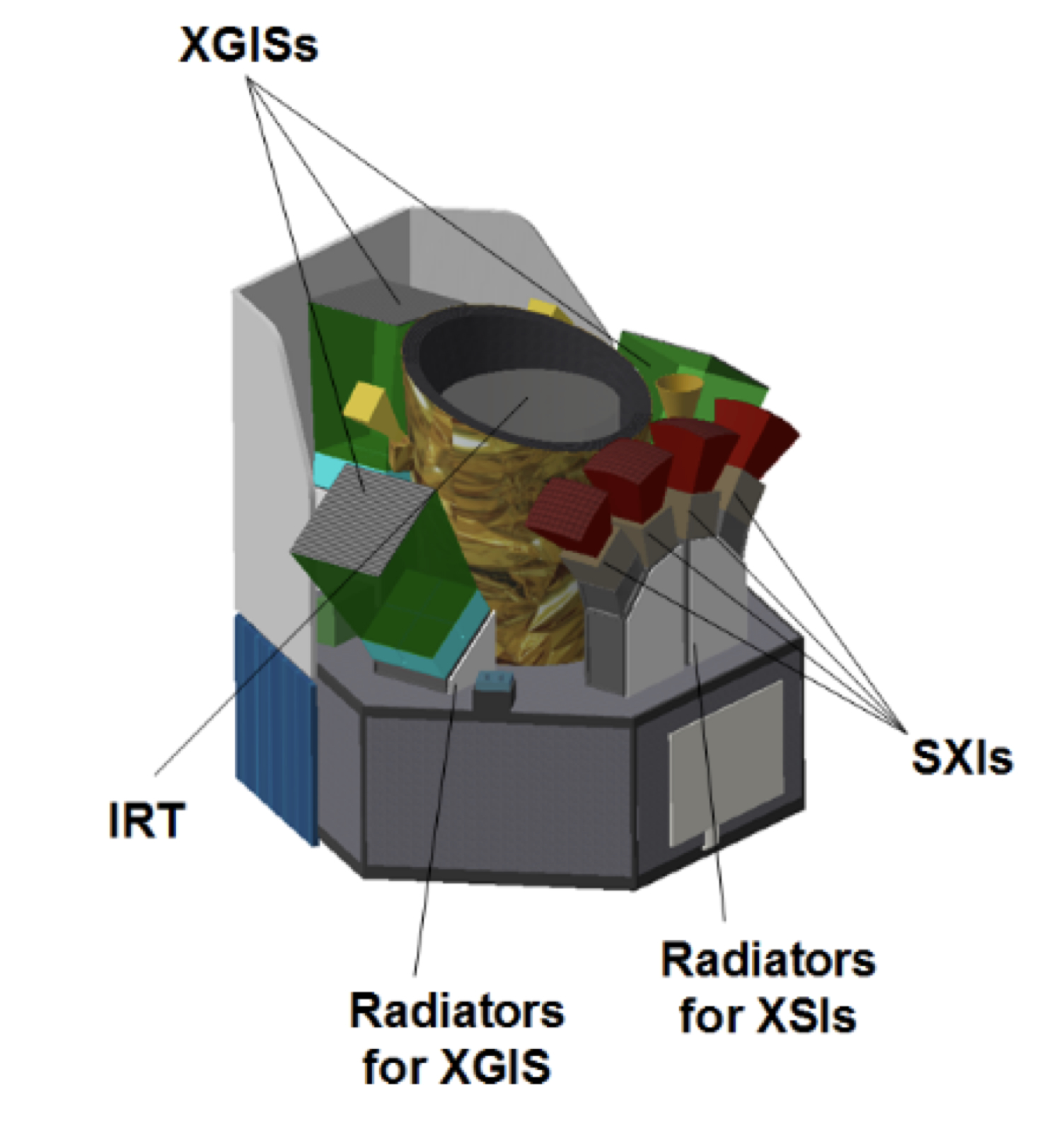Three missions left in ESA’s race for the next medium-class space mission
Last year, 27 missions entered the competition for ESA’s next “medium-class” space mission. Now only three are left in the race, including the THESEUS mission with involvement from DAWN. The proposed spacecraft aims to unveil the secrets of stellar explosions in the early Universe.
Illustration of the main science goals — stellar explosions in the early Universe — of the space mission THESEUS. This mission is currently among the final three in ESA’s competition for the next medium-class space mission, only one off which will be selected. Credit: ESA THESEUS Assessment Study report.
Every so often, the European Space Agency, ESA, issues a call for proposals for new science missions. The proposals are assumed to describe in detail not only the scientific goals, but also their implementation, budget, realization, etc.
Missions fall in three categories, depending in particular on their cost and required development time: small (S-class), medium (M-class), and large (L-class). For example, the recently launched Euclid mission is characterized an an M-class mission, whereas the James Webb Space Telescope (which is operated in collaboration with the American and the Canadian space agencies, NASA and CSA) is an L-class mission.
In December 2021, a call was made for an M-class mission to be launched in the mid-2030’es, and over the last two years, what was initially 27 responses to this call has now been narrowed down to only three possible missions.
THESEUS
Two of these missions are M-Matisse, a twin spacecraft mission to observe Mars and its atmosphere simultaneously from two different locations in space, and the Plasma Observatory which is actually seven satellites that will observe the electrically charged part of Earth’s atmosphere.
The third mission is called THESEUS, an acronym for “Transient High-Energy Sky and Early Universe Surveyor”. As its name implies, it is designed to observe transient (i.e. “brief”), highly energetic events — which in general means some sort of exploding stars — focusing on the early Universe. The most energetic of these are the so-called gamma-ray bursts.
THESEUS proposed instrument configuration: The three different detectors are shown in green (gamma-rays), red (X-rays), and gold (infrared). Credit: Amati et al. (2017).
To observe these violent events, THESEUS will carry aboard three instruments, specialized for three different energy regimes: A gamma-ray detector, an X-ray telescope, and a more “standard” telescope for observing (near-)infrared light. But we already have several satellites that are able to detect gamma-ray bursts. So why do we need another?
Fade to black
Lise Christensen, associate professor at the Cosmic Dawn Center and participant in the scientific team that has conceived the THESEUS mission, explains:
“Today we have multiple gamma-ray and X-ray observatories in space. The high-energy radiation quickly fades, and observing the less energetic »afterglow« is extremely important to learn about the origin of these events. But the time it takes for the satellite to notify astronomers on Earth, who then need to contact observatories and make them point their telescopes toward the bursts, can be considerable, taking hours or days. With the afterglow also fading away, it’s a battle against time.”
With THESEUS, the astronomers can circumvent much of these delays: Fully automated, the spacecraft will simply be able to detect the bursts, identify their locations, and use its infrared telescope to characterize them.
Especially in the distant and hence early Universe, observations of afterglows are rare, and only a few have been detected from before the Universe was one billion years. Bursts from these epochs are not only very faint; also, the expansion of the Universe has stretched their light beyond wavelengths that can be detected with normal, “optical” telescopes.
Another type of explosion happens when two compact neutron stars collide and explode as a so-called kilonova, an event that simultaneously releases gravitational waves, and further is thought to be responsible for creating many of the heavy elements in the Universe.
“For two decades, we have known that a gamma-ray burst mission with a near-infrared telescope in space is needed to identify the most distant explosions in the Universe. THESEUS will deliver that, and will also provide the fundamental localization of the gravitational wave sources, enabling us to explain the origin of many of the elements in the Universe,” concludes Lise Christensen.
It is expected that the winning candidate mission will be chosen by mid-2026.
More information
Contact
ESA press release
Danish version
To read this news story in Danish, click here.
Tags: Gamma-ray bursts, Kilonovae



